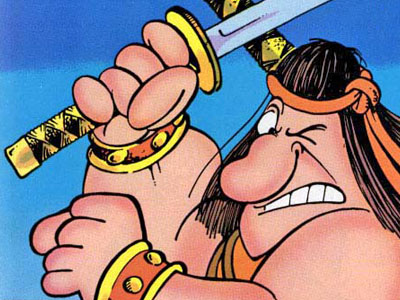Carson has built a lucrative second career and substantial political base on a brilliantly realized redemption narrative. These narratives invariably start with an unredeemed sinner headed for a bad end. The more lurid the sin, the more entertaining the story.
This is not a new development.
from The Adventures of Huckleberry Finn
The first shed we come to the preacher was lining out a hymn. He lined out two lines, everybody sung it, and it was kind of grand to hear it, there was so many of them and they done it in such a rousing way; then he lined out two more for them to sing—and so on. The people woke up more and more, and sung louder and louder; and towards the end some begun to groan, and some begun to shout. Then the preacher begun to preach, and begun in earnest, too; and went weaving first to one side of the platform and then the other, and then a-leaning down over the front of it, with his arms and his body going all the time, and shouting his words out with all his might; and every now and then he would hold up his Bible and spread it open, and kind of pass it around this way and that, shouting, "It's the brazen serpent in the wilderness! Look upon it and live!" And people would shout out, "Glory!—A-a-men!" And so he went on, and the people groaning and crying and saying amen:
"Oh, come to the mourners' bench! come, black with sin! (Amen!) come, sick and sore! (Amen!) come, lame and halt and blind! (Amen!) come, pore and needy, sunk in shame! (A-A-Men!) come, all that's worn and soiled and suffering!—come with a broken spirit! come with a contrite heart! come in your rags and sin and dirt! the waters that cleanse is free, the door of heaven stands open—oh, enter in and be at rest!" (A-A-Men! Glory, Glory Hallelujah!)
And so on. You couldn't make out what the preacher said any more, on account of the shouting and crying. Folks got up everywheres in the crowd, and worked their way just by main strength to the mourners' bench, with the tears running down their faces; and when all the mourners had got up there to the front benches in a crowd, they sung and shouted and flung themselves down on the straw, just crazy and wild.
Well, the first I knowed the king got a-going, and you could hear him over everybody; and next he went a-charging up on to the platform, and the preacher he begged him to speak to the people, and he done it. He told them he was a pirate—been a pirate for thirty years out in the Indian Ocean—and his crew was thinned out considerable last spring in a fight, and he was home now to take out some fresh men, and thanks to goodness he'd been robbed last night and put ashore off of a steamboat without a cent, and he was glad of it; it was the blessedest thing that ever happened to him, because he was a changed man now, and happy for the first time in his life; and, poor as he was, he was going to start right off and work his way back to the Indian Ocean, and put in the rest of his life trying to turn the pirates into the true path; for he could do it better than anybody else, being acquainted with all pirate crews in that ocean; and though it would take him a long time to get there without money, he would get there anyway, and every time he convinced a pirate he would say to him, "Don't you thank me, don't you give me no credit; it all belongs to them dear people in Pokeville camp-meeting, natural brothers and benefactors of the race, and that dear preacher there, the truest friend a pirate ever had!"
And then he busted into tears, and so did everybody. Then somebody sings out, "Take up a collection for him, take up a collection!" Well, a half a dozen made a jump to do it, but somebody sings out, "Let him pass the hat around!" Then everybody said it, the preacher too.
So the king went all through the crowd with his hat swabbing his eyes, and blessing the people and praising them and thanking them for being so good to the poor pirates away off there; and every little while the prettiest kind of girls, with the tears running down their cheeks, would up and ask him would he let them kiss him for to remember him by; and he always done it; and some of them he hugged and kissed as many as five or six times—and he was invited to stay a week; and everybody wanted him to live in their houses, and said they'd think it was an honor; but he said as this was the last day of the camp-meeting he couldn't do no good, and besides he was in a sweat to get to the Indian Ocean right off and go to work on the pirates.
When we got back to the raft and he come to count up he found he had collected eighty-seven dollars and seventy-five cents. And then he had fetched away a three-gallon jug of whisky, too, that he found under a wagon when he was starting home through the woods. The king said, take it all around, it laid over any day he'd ever put in in the missionarying line. He said it warn't no use talking, heathens don't amount to shucks alongside of pirates to work a camp-meeting with.






